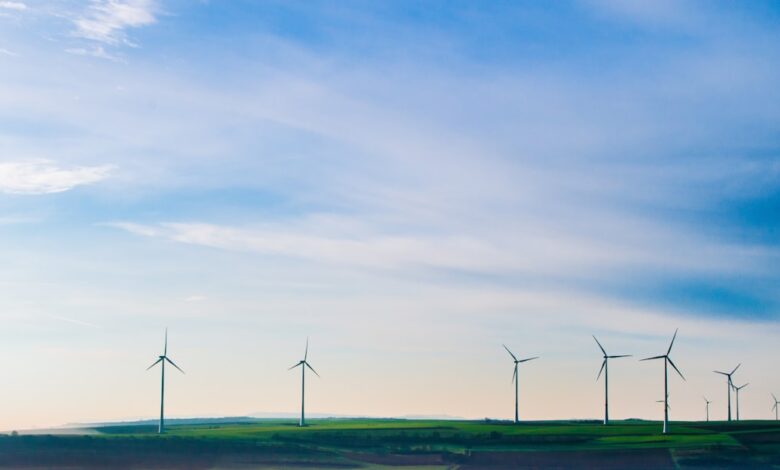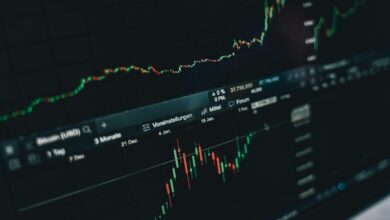Powering Savings: Exploring Breakthrough Innovations in Energy Efficiency and Their Impact on Cost Reduction

In an era where sustainability and economic viability are paramount, innovations in energy efficiency have emerged as a beacon of hope for both businesses and households alike. As the global community grapples with the dual challenges of rising energy costs and environmental concerns, the development and implementation of cutting-edge technologies offer transformative solutions. This article delves into the latest breakthroughs in energy efficiency, revealing how they not only contribute to a greener planet but also translate into significant cost savings. We will explore the intersection of state-of-the-art technology and practical applications, demonstrating how these innovations can enhance financial performance for various sectors. Furthermore, we will examine the critical role of policy and consumer behavior in fostering a culture of energy efficiency, paving the way for a sustainable future that benefits all. Join us as we uncover the multifaceted potential of energy efficiency innovations and their impact on our economy and environment.
- harnessing-technology:-breakthrough-innovations-in-energy-efficiency“>
1. Harnessing Technology: Breakthrough Innovations in Energy Efficiency
In recent years, the drive towards enhanced energy efficiency has been propelled by a wave of technological breakthroughs that promise significant cost savings across various sectors. One of the most transformative innovations is the advent of smart technologies, including smart grids and smart meters. These tools enable real-time monitoring and management of energy consumption, allowing both consumers and utility providers to optimize usage patterns. For instance, smart thermostats can learn user behaviors and adjust heating and cooling systems accordingly, reducing energy waste while maintaining comfort.
In the realm of building design and construction, energy-efficient materials and techniques have gained traction. Innovations such as advanced insulation materials, energy-efficient windows, and reflective roofing can dramatically reduce the energy needed for heating and cooling. Building Information Modeling (BIM) also plays a crucial role by allowing architects and engineers to simulate energy performance during the design phase, ensuring that buildings are not only aesthetically pleasing but also efficient.
Moreover, the integration of renewable energy sources, such as solar panels and wind turbines, has been enhanced by innovative energy storage solutions. Battery technologies, including lithium-ion and emerging solid-state batteries, enable households and businesses to store excess energy generated during peak production times for use when demand is high or generation is low. This not only maximizes the utilization of renewable energy but also reduces reliance on fossil fuels, leading to substantial long-term cost savings.
In transportation, electric vehicles (EVs) have undergone significant advancements, with improvements in battery efficiency and charging infrastructure making them more accessible and practical for consumers. The shift towards EVs not only lowers operating costs for users but also contributes to reduced emissions, further highlighting the economic and environmental benefits of energy-efficient technologies.
Lastly, the role of artificial intelligence (AI) in optimizing energy consumption cannot be overstated. AI algorithms can analyze vast amounts of data to predict energy usage patterns, identify inefficiencies, and suggest actionable improvements. From industrial applications where AI can optimize machinery operation to residential settings where it can enhance energy management systems, AI is a key player in the quest for energy efficiency.
As these technologies continue to evolve and become more widely adopted, the potential for cost savings is immense. By harnessing these innovations, businesses and consumers alike can significantly reduce their energy expenses while contributing to a more sustainable future.
In recent years, innovations in energy efficiency have emerged as critical tools for reducing consumption and driving down costs across various sectors. One of the most significant advancements has been the deployment of smart technologies, including smart meters and energy management systems, which provide real-time data on energy usage. These tools empower consumers and businesses to make informed decisions about their energy consumption, leading to more efficient usage patterns and, consequently, lower bills.
Another notable innovation is the development of high-efficiency appliances and equipment. For instance, Energy Star-rated products consume significantly less energy than their conventional counterparts, often utilizing advanced technologies such as variable-speed motors and improved insulation. By investing in these energy-efficient alternatives, households and businesses can achieve substantial savings over time, as these products not only lower energy consumption but also often come with longer lifespans and reduced maintenance costs.
Building design has also seen a revolution with the integration of energy-efficient materials and systems. Innovations in insulation, window technologies, and passive solar design reduce the need for heating and cooling, resulting in lower energy demands. For example, the use of triple-glazed windows can dramatically improve thermal performance, leading to reduced energy costs and enhanced comfort within the living or working environment.
Moreover, renewable energy technologies, such as solar panels and wind turbines, are becoming increasingly accessible. These innovations not only provide a sustainable energy source but can also lead to significant cost savings. With the declining costs of solar installations, homeowners and businesses can reduce or eliminate their reliance on grid power, resulting in long-term savings and greater energy independence.
Finally, policy initiatives and incentives play a crucial role in promoting energy efficiency innovations. Governments around the world are implementing programs that encourage the adoption of energy-saving technologies, often through tax credits, rebates, and grants. These initiatives not only facilitate the transition to more efficient systems but also help to offset initial investment costs, making energy efficiency upgrades more financially viable for a broader range of consumers.
In summary, the landscape of energy efficiency is evolving rapidly, driven by technological advancements and supportive policies. The potential for cost savings through these innovations is substantial, offering both immediate financial benefits and long-term sustainability gains. As awareness of energy efficiency continues to grow, individuals and organizations alike are increasingly recognizing its value, paving the way for a more energy-conscious future.





